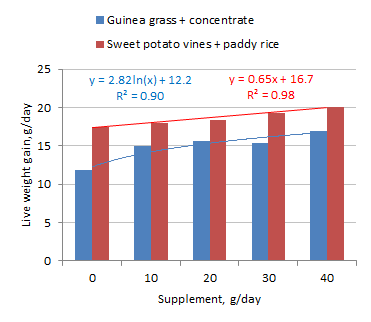 |
 |
| Figure 1. Growth rates of rabbits on two feeding systems: sweet potato vines with paddy rice versus Guinea grass with concentrates | Figure 2. DM feed conversion of rabbits on two feeding systems: sweet potato vines with paddy rice versus Guinea grass with concentrates |